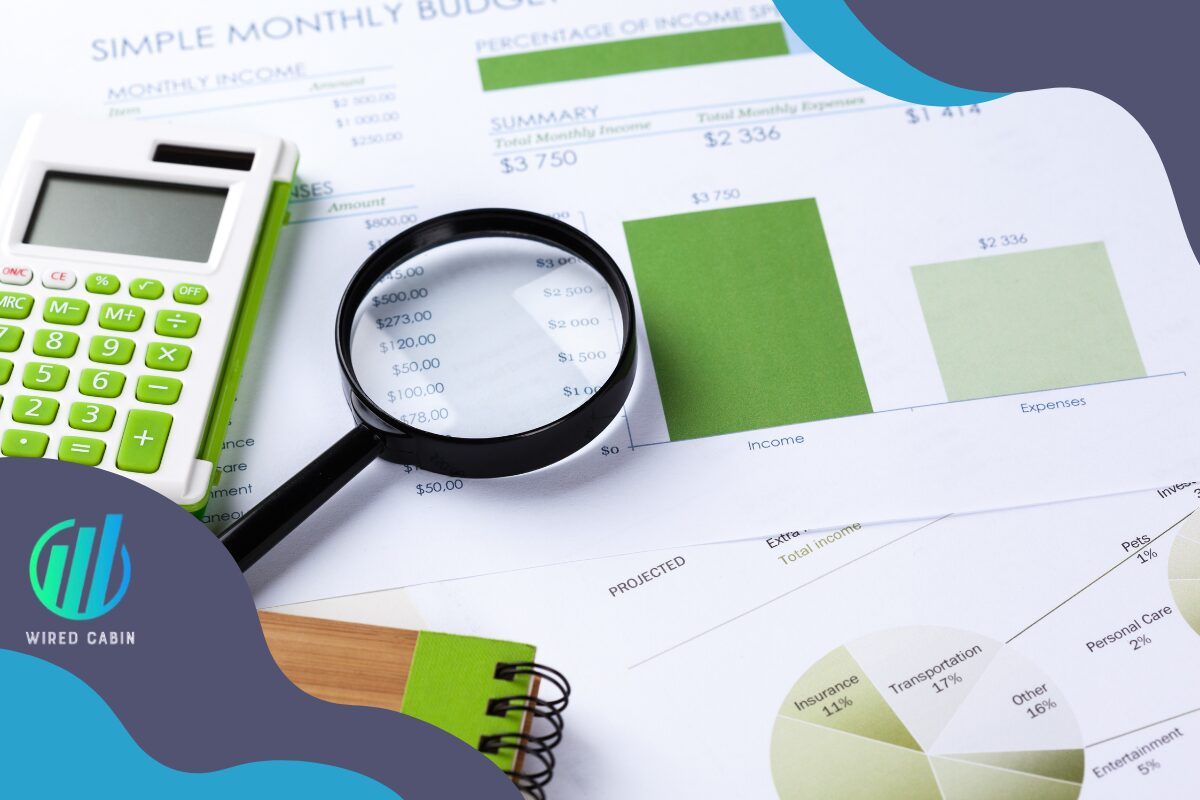We recommendation is:
What is Financial Statement?

Financial statements are essential records that shed light on a company’s performance and financial health. Financial reporting in South Africa, like in many other countries, is subject to particular rules and regulations that are established by the regulatory authorities. By providing a quick overview of a company’s financial condition, performance, and cash flows, these statements benefit a variety of stakeholders, including creditors, investors, government agencies, and management. We explore the definition of financial statements in the context of South Africa, its constituent parts, the legal structure around them, and their importance in this extensive reference.
What is a Financial Statement?
Formal records of a person, business, or other entity’s financial activity and condition are called financial statements. They offer an overview of the entity’s cash flows, financial condition, and transactions during a given time frame. The International Financial Reporting Standards (IFRS) framework, which guarantees uniformity and comparability in financial reporting across countries, is followed in the preparation of financial statements in South Africa.
Components of Financial Statements in South Africa
In South Africa, financial statements usually comprise four primary components:
Balance Sheet
A company’s financial situation is shown on a balance sheet at a certain point in time, typically at the conclusion of the reporting period. It lists the assets, liabilities, and equity held by shareholders of the company. Cash, inventory, property, plant, and equipment are examples of assets, debts and other commitments owed by the business are examples of liabilities. The remaining interest in the company’s assets after subtracting its liabilities is known as shareholders equity.
The South African balance sheet follows either South African Generally Accepted Accounting Practice (SA GAAP) or International Financial Reporting Standards (IFRS). The usual format of the presentation lists the assets on the left and the liabilities and shareholders equity on the right. For stakeholders evaluating the liquidity, solvency, and financial health of the company, the balance sheet is an essential instrument.
Income Statement
The company’s financial success over a given time period—typically a fiscal quarter or year—is reported in the income statement. It lists the company’s earnings as well as the costs incurred in producing those earnings, resulting in net income or net loss. Other comprehensive income components, such as gains or losses on investments, that are not included in net income are also included in the statement of income.
To ensure consistency and comparability in financial reporting, income statements in South Africa are prepared in accordance with SA GAAP or IFRS. The income statement offers important information on the profitability, revenue trends, and operational effectiveness of the business. It aids in the assessment of the business’s overall financial performance, cost structure, and revenue-generating operations by stakeholders.
Cash Flow
The company’s operating, investing, and financing activities during the reporting period are represented by the cash inflows and outflows shown in the cash flow statement. It facilitates the evaluation of the company’s liquidity condition and cash generation capacity by stakeholders. The operating, investing, and financing operations parts make up the three components of the statement.
In South Africa, cash flow reporting is transparent and dependable since the cash flow statement complies with IFRS or SA GAAP regulations. Cash flows resulting from regular business operations, such sales and expenses, are included in operating activities. Cash flows from the acquisition or disposal of assets, such as real estate, machinery, and equipment, are included in investing activities. Cash flows associated with debt repayment or capital raising, such as dividend payments or share sales, are included in financing activities. Stakeholders can better grasp the company’s cash flow dynamics and sustainability with the help of the cash flow statement.
Statement of Changes in Equity
The company’s equity changes over the reporting period are displayed in the statement of changes in equity. It contains information about dealings with shareholders, including changes to accounting rules, share issuances, repurchases, and dividend payments. The statement sheds light on the variables influencing how shareholders equity fluctuates over time.
To ensure accuracy and consistency in equity reporting, the statement of changes in equity in South Africa is prepared in compliance with either SA GAAP or IFRS. The statement aids in the understanding of the effects on the company’s equity position of various transactions and events by stakeholders. It is an effective instrument for evaluating the capital structure, dividend policy, and development of shareholder value of the business.
Regulatory framework for financial reporting in South Africa
In South Africa, financial reporting is subject to a number of regulations and standards that are designed to improve financial statements’ comparability, accountability, and transparency. Among the principal regulatory frameworks are:
Companies Act of 2008
The corporations Act of 2008 delineates the prerequisites for financial reporting from South African-registered corporations. It requires businesses to prepare their yearly financial statements using accepted accounting standards, including South African Generally Accepted Accounting Practice (SA GAAP) or International Financial Reporting Standards (IFRS). The Act also creates the legal framework for assurance and auditing and specifies disclosure requirements.
International Financial Reporting Standards (IFRS)
The preferred accounting standard for generating the financial statements of listed businesses and other public interest entities in South Africa is IFRS. By ensuring uniformity, clarity, and comparability in financial reporting, IFRS empowers stakeholders to make knowledgeable choices. When generating their financial accounts, which include income statements, balance sheets, and cash flow statements, businesses must adhere to IFRS.
South African Institute of Chartered Accountants (SAICA)
Setting accounting standards and encouraging excellence in financial reporting and auditing procedures are important tasks that SAICA undertakes. It provides technical pronouncements, interpretations, and guidance to help professionals and businesses adhere to regulatory requirements and uphold strict standards of financial reporting integrity.
Significance of Financial Statements in South Africa
In the South African business environment, financial statements are essential since they serve a variety of stakeholders and accomplish a number of goals:
Investors and Shareholders
Financial statements are used by shareholders and investors to evaluate the financial stability, profitability, and performance of the businesses they invest in. Investment choices about the purchase, holding, and sale of assets can be made by investors by carefully examining income statements, balance sheets, and cash flow statements. Investors can assess the efficacy of management and the potential for growth of the company with the use of financial statements.
Creditors and Lenders
Financial statements are used by lenders and creditors to assess borrowers creditworthiness and ability to repay debt. Creditors examine cash flow and balance sheets to determine the company’s solvency, liquidity, and capacity to pay off debt. Creditors can use financial statements to help them make well-informed judgments on credit extension, loan terms, and credit risk management.
Regulators and Government Authorities
Financial statements are used by regulators and government agencies to evaluate financial soundness, keep an eye on compliance with regulations, and protect the public’s and investors interests. Regulators can enforce rules, spot fraud, and preserve market integrity by using the insights into corporate governance, transparency, and accountability that financial statements give.
Management and Internal Stakeholders
Financial statements are used by management and internal stakeholders to monitor performance, assess profitability, and formulate strategic plans. Management can determine the business’s prospects, threats, vulnerabilities, and strengths by examining the income statement, balance sheet, and cash flow statement. Financial statements aid in resource allocation, forecasting, and budgeting, allowing management to maximize shareholder value and optimize operational efficiency.
Financial statements are essential resources for evaluating the health and performance of South African businesses finances. Companies can improve financial reporting’s accountability, comparability, and transparency by following accounting standards and regulatory frameworks. Financial statements are essential tools used by stakeholders to make well-informed decisions about lending, management, regulation, and investment. Navigating the complexity of the South African corporate climate and fostering financial stability and prosperity require an understanding of the components, regulatory framework, and significance of financial statements.





